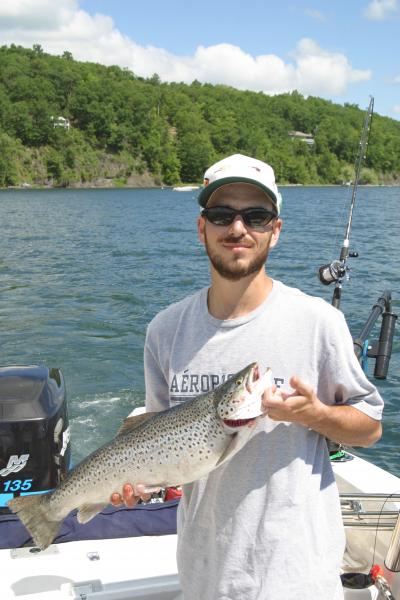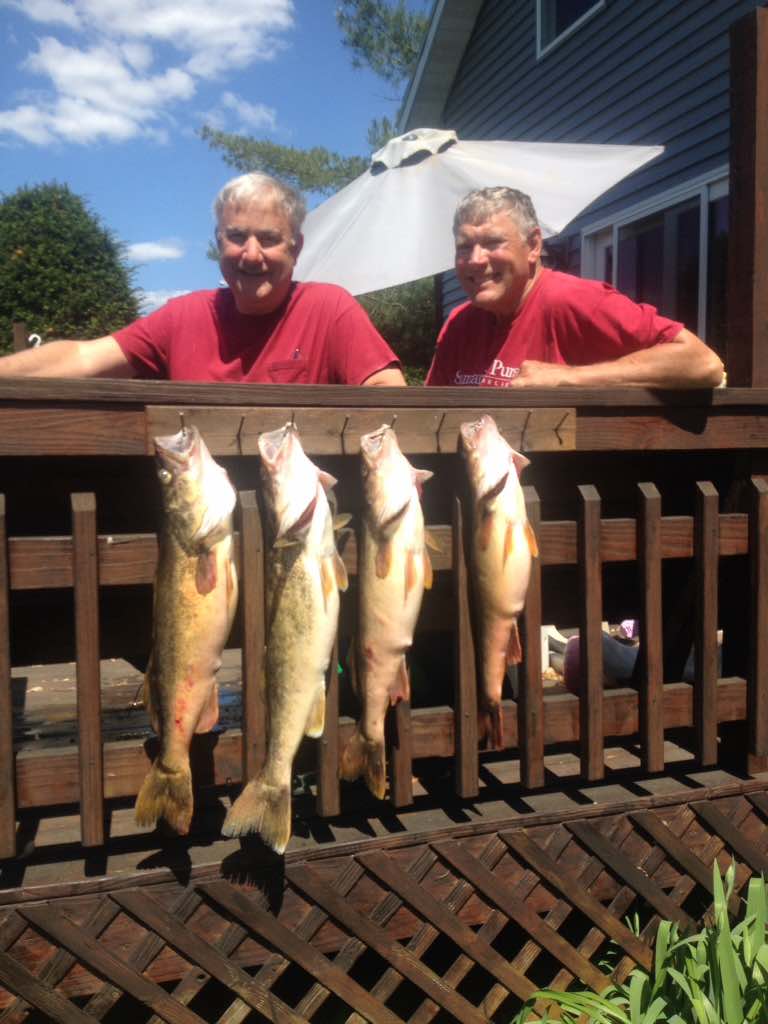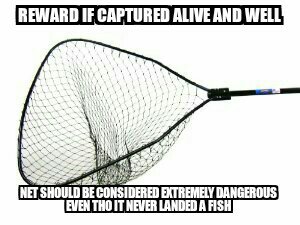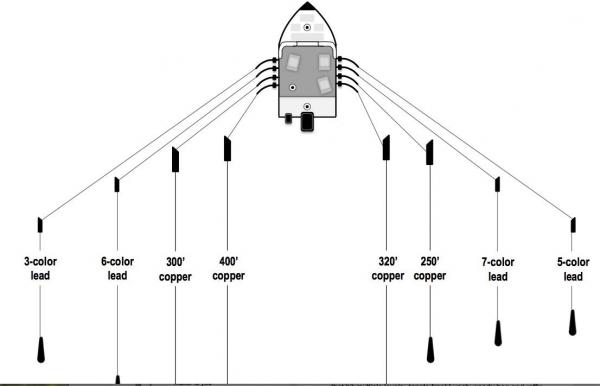-
Posts
13,865 -
Joined
-
Last visited
Everything posted by Sk8man
-
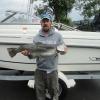
Biggest Fish Of Her Life
Sk8man replied to jacobj12k's topic in New York Fishing Reports - Lake Ontario (South Shore)
That pic says it all and is a prime example of why we should take the time to expose youngsters to our sport. It is one of the best ways to really get to know your own children. It is the perfect setting to tactfully deal with "issues" sometimes as well as there is no place to run or hide or avoid yet offers a lot of opportunities for positive reinforcement of good behavior. The side benefits of that exposure can be life changing for both parents and children....don't ever sell it short. Nice job Dad. -
I know absolutely zero about kayak fishing but try increasing your speed 2.5 to 3.2 (if possible) and add some weight to your leadcore to get down a bit deeper and let out more line behind the boat. Use # 44, 22 or31 or even the tiny #8 Suttons if you have them. The real small Honeybee spoons or Alpena Diamonds may also do the trick if you have them.
-
Chris covered it beautifully...ditto on his answer P.S. There is no such thing as a "stupid" question if asked in earnest.
-
-
They work great just throw a peanut or Spin-N-Glow behind it and you're all set. Less drag than the metal blades
-

Software update for Lowrance HDI and CHIRP units 1-23-15
Sk8man replied to Sk8man's topic in Open Lake Discussion
yes a blank separate card. -
-
Option #1 _ 1. - YES and If you are using a rod longer than 6 ft you can go longer ....just short of the rod length so it is easier netting. If you are experienced handlining you can go longer but when dealing with kings this can be difficult 2. - The slider isn't ever put directly on the downrigger cable and when another release is used it usuallybecomes "fixed".. The advantage is that it keeps your lure at roughly the same depth relative to the main lure rather than sliding up and down so you have a better idea where it is. Option #2 - 1. Only two release points one at the rubber band or release of the fixed slider and one at the main release for the main line lure. Sometimes a small fish may fail to release BOTH at the same time but you can manually release it yourself (for either of them (the main or slider release). 2. Yes you can use just the rubberband but you anticipated the answer to the second part....the rubberband often slips due to tension of the rod and waves etc. Option #3 - 1. Yes it is possible but if you do it you may want to allow more space between the stacked rod and the other stuff and you may have to clear that rod if you have a king or nice fish on a line under it. I normally allow about 10 -15 ft from the main line lure to the slider (between them) If doing what you are suggesting I'd allow at least double that. It also depends somewhat on how long you are running your main lure out. general question - You can use a stickbait on the slider or the mainline but remember that those trebles are highly likely to get caught up in the main line or in the slider line. If you're a risk taker and don't mind tangles "go for it"
-
-

5 color worth taking come mid-June ?
Sk8man replied to fatboyjack1's topic in Questions About Trout & Salmon Trolling?
June is usually a "transition" month on the lakes with the thermocline starting to form so leadccores are often productive then and if you find the fish somewhat below where your 5 core is running you can do as Big Dave suggested sometimes I just add a few large split shot about 4 or 5 ft up from the spoon and troll a slight bit slower but it depends on what else I'm running too. -
-
-
Lowrance makes one specifically for water which is hand held called the H2O. They aren't real expensive and they will give sog and the GPS stuff. I use one for a backup to my depth finder/GPS. It is AA battery powered and have a plug to plug into a receptacle on the boat as well.
-
-
Like many things in life the selection of the pound test whether wire or braid or mono is a matter of compromise. It boils down to using something that gives you what you need for the job without as many potential drawbacks as possible. Usually things that are specifically designed for a particular purpose perform better than multipurpose items. In most situations with fishing lines this is the case. All things being equal the larger the diameter of line regardless of material the less nicely it will cut through the water and achieve comparable depth with a lesser diameter of the same material. In most cases you would be best served by dedicating specific rods and reels for salt vs. fresh water and the lines would be selected taking into consideration the substantial differences in requirements. I think 80 lb test in fresh water is substantial "overkill" given the available species because even with something like muskies you can use small diameter titanium leaders. The main reason for using relatively high pound test with braid in fresh water is because of the use of boards where the additional strength may be needed pulling through rough water. The decision should usually be what is the smallest diameter line with the best strength for the species you'll be targeting with the equipment you'll be using. I know a lot of folks on here seem to have an aversion to roller tips vs. twilli tips and twillis may be less expensive and will usually get the job done but I believe they are harder on the wire over time than roller tips and perhaps more prone to kinking. I have wire on a few of my roller rigs that is over 30 years old that I still have full trust in. I haven't had any problems or breakage with 30 lb test ss wire despite numerous kings on it.
-
Over the years I've used about every type of wire out there whether on Seth Green rigs, or pulling copper or wire rigs in everything from 20 lb test to 80 lb and I can tell you that Monel wire sinks nicely but that is about the only positive connected with it I currently still have it on my A and S automatic reel (for pulling/ jerking) wire because it is thinner diameter and cuts through the water a bit better than copper wire so I can get more of it on the reel but it is truly terrible in terms of kinking (as it is incredibly soft wire). Seven strand or 19 strand stainless wire is the way to go with any wire rig and braided copper is the way to go for copper rigs and single strand copper is best for jerking copper (bottom fishing). An additional thing (or alternate method) with the great tips from Gill T is the first time you go out on the boat after putting on new stainless wire is put a 1 or 2 lb sinker on the swivel and run out to deep water and let out a bunch of the wire and rewind it under that tension and it will seat nicely on the reel spool. Also make sure when the wire is put on the reel in the first place that the level wind guide lines up straight with the wire (i.e. not on an angle).
-
Jeff - dvd is right the leadcore usually excels about now. The sticks are usually better earlier and in shallow in my view anyway small to medium sized spoons in the orange/red range and copper colored as well.
-

Wanted downrigger weights
Sk8man replied to oldkevin's topic in Classifieds - Buy, Sell, Trade or Rent
Oldkevin you have a PM -
Hi Chuck, Much of my fishing is on the Finger Lakes and I usually use the coppers out in deep water rather than in shallower where the rapid and severe structure changes can wreak havoc with my setups. Often I will run the 200 copper off a Church Walleye board or a TX 44 board and the 250 down the chute along with 2 downriggers with sliders. I target rainbows, landlocks and browns primarily (other than derbies) so I am seldom running below 80 or 90 ft over whatever. I use the Fish Hawk TD to determine the actual depth of the particular spoon I am running with the particular rig I am using so in that sense I can't answer the question simply. It all depends on your speed, underwater currents, the particular lure, the line diameter or the backing and copper wt. used etc. If not using the TD I'd be "guesstimating" and shooting in the dark. Because I vary my speed considerably especially after the rainbows and landlocks the lure is changing positions in the water column significantly. Basically I run things until I connect with a fish and then try to repeat the process (e.g. boat speed, angle of the lines, etc. and the process is pretty "subjective". I don't have any depth charts or things of that nature for it rather it is a dynamic process. I will say that sometimes I fix the weight and other times I let the weight slide along the bow in the line (backing) for differing action so again I use imprecise methods (to my madness) :lol:If using the sliding weight the item in the pic below is what I use. It is basically something used in salt water fishing for bottom fishing that I transferred to this situation.
-
This discussion has me thinking that maybe there are reasons why I have always stuck with relatively short coppers (200 and 250) and where I need extra depth I use snap weights. I"ve used my Fish Hawk TD to see where my lines are running so I have some idea of that and I think the decreased length of the copper has some advantages in terms of the tangle situation with the dipseys etc.as I've never had one yet with them (probably shouldn't have said that either )
-

can I have a reliable dock and boat lift installed on lake ontario
Sk8man replied to dfg4240's topic in Open Lake Discussion
Another consideration is the fact that if/when (can be often) you are dealing with a north, NW or NE wind you may be able to get out of the lift but not back in (without maybe damaging the boat) -
Good points.
-

Bimini Top Type and Placement
Sk8man replied to Fishbowl836's topic in Questions About Trout & Salmon Trolling?
As has been already said you want the bimini to be high enough to stand up under while totally erect and you need to remember the sun changes position during the day so if the bimini is too short from front to back it serves little purpose when the sun is high and on angle. While it may be tempting to go with a bimini already made (perhaps cheaper) it is often not the best option. Have one custom made taking into consideration your exact rod holder placement, seating placement etc. There is nothing more frustrating than paying good money for something that doesn't work right and properly fitting boat canvas is definitely one of those things in life. It may be a bit of a drive to Sodus Point from Ithaca but there is a canvas guy there named John Mann who could take a look at your specific boat and custom make you a top that you will be very satisfied with,,,,,he is one of the best around and very reasonable. Here is his phone number: John Mann > Sodus Bay Canvas 315 871 6400 -
Hey Jeff - You might want to give a more detailed description of what you are doing. For example are you running inlines (and which ones) or big boards? Coppers or leadcores on them or just straight ? How far back are the lures running and the size of the sticks and the running speeds. Did you try spoons on them as well? Sometimes they just don't want sticks etc. best regards, Les
-
Matt is very right about the slack situation. Sometimes especially with smaller steelies or rainbows/landlocks you may even see them jumping behind the boat without realizing they are on the slider other than perhaps seeing the rod tip moving so it is important to pay close attention to your riggers when using sliders and take up the slack as he said. Sometimes even browns will come into the prop wash for sliders as the lures on them generate quite a bit of action with the short leaders. Having extra lures in the water is always good when you fish solo a lot as I do and as Matt indicated having a couple fish on at the same time is a real adrenalin rush especially when trying to net solo


